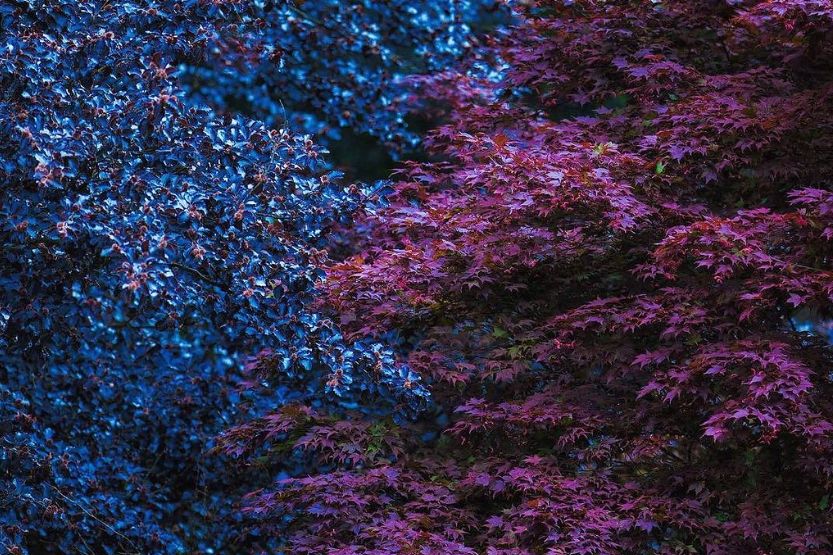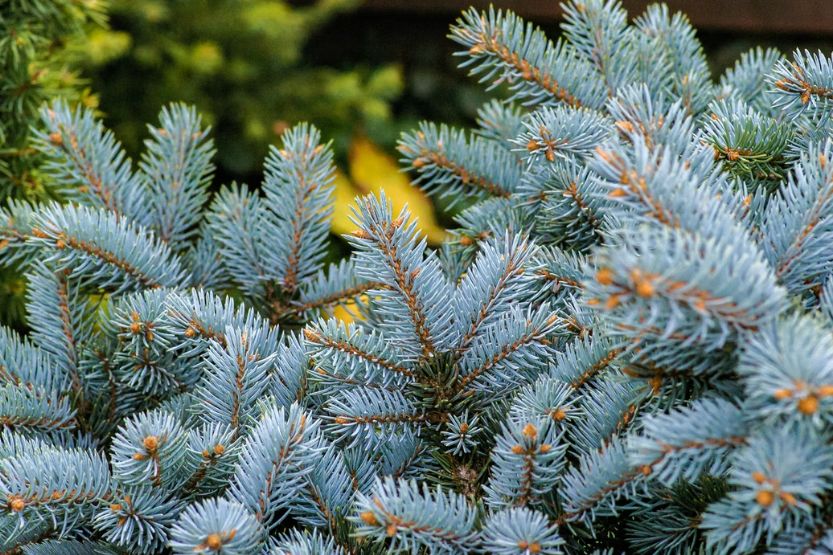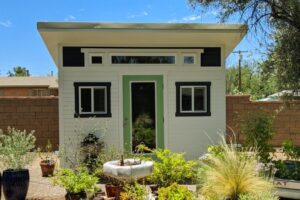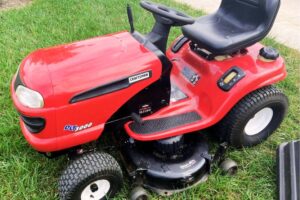Japanese maple with a shade of blue sounds like the perfect tree for your garden. But it’s a question that many arborists and gardeners have asked: is there a blue Japanese maple?
The blue Japanese maple does not exist. There are many different cultivars of Japanese maple (Acer palmatum), but none produce blue leaves. As far as we know, the only way to get a blue Japanese maple is through selective breeding or genetic modification, both extremely difficult and expensive.
Read on to know what the blue Japanese maple is, why it’s so popular despite not existing, and some real alternative trees that similarly possess its magical look.
What Is Blue Japanese Maple?

The Japanese maple tree is one of the most popular trees in the world. It has been used in gardens for centuries and is an excellent addition to any yard. However, many fakes claim to be a “blue Japanese maple.” Is it possible to produce such a tree? Does blue Japanese maple bonsai exist?
Some people claim that Japanese blue maple trees exist. A blue Japanese maple bonsai tree could be true, but it’s either a blue plastic tree or a real one, artificially colored with a blue dye.
Blue does not naturally exist in the leaves of Japanese maple trees. Maple leaves come in various colors, including orange, white, pink, green, purple, and red.
So if you see a tree advertised as such, it is likely a fake.
What About Blue Japanese Maple Seeds?
Although it may seem like the answer should be “yes,” there are no blue Japanese maple seeds. The reason is simple: no blue Japanese maples are in the wild.
To grow a blue Japanese maple tree, you need to find its seeds or raise one from seedlings.
However, because they don’t exist in nature and aren’t readily available on the market, not even through special order, neither of these options is viable for most people who want a blue-leaved tree outside of their home.
If you’re looking for a plant with gorgeous blue leaves, consider purchasing a hydrangea. While they aren’t the same striking color as Japanese maples, hydrangeas are known for their deep blue hue and beautiful flowers.
Why Are There Photos of Blue Japanese Maple Tree Online
Online photos of blue Japanese maples have been manipulated through filters or Photoshopped. Similarly, sellers claiming to have blue Japanese maple seeds are scammers. They’ll say the leaves will be blue, but the plants will have green leaves.
We do not recommend purchasing seeds from these sellers. They may give seeds from a regular Japanese maple or a different plant.
Many times, advertised blue Japanese maple online turns out to be other plants, such as the Mandarin tree.
You can also find scammers posing as sellers of blue-leaf trees on other online marketplaces like Amazon. Based on their user ratings and customer feedback, you’ll be able to detect them immediately.
What Are the True Colors of Japanese Maples?
Depending on the region and season, real Japanese maple leaves can be:
- Pink
- Yellow
- Orange
- Green
- White
- Red
- Purple
You can find purple maple leaves in nature on rare occasions. Purple Japanese maples are real trees that you can get from reputable nurseries.
As we said earlier, blue isn’t one of the colors Japanese maple leaves adopt. You may opt for a dyed Japanese maple tree if you really must have one. But remember that, despite what some sellers claim, a blue bonsai tree is not natural.
Usually, food coloring is used to create the blue foliage of a Japanese maple tree. These food dyes are used in various applications and may truly make the leaves blue. However, this is just temporary. After the leaves fall off in the winter, they will not reappear in the spring with the blue color.
What Are the Alternatives to the Blue Japanese Maple?

You’re lucky still to want something similar to fake blue Japanese maple trees! Many different plants with a wide range of hues can mimic the same magical look.
You can make bonsais from any perennial woody-stemmed tree or shrub. It all comes down to choosing the correct plant with the right qualities and sticking with the long and thorough pruning and cutting process.
Here are some options to consider:
1. Purple Ghost (Acer palmatum) or Purple Japanese Maple
Striking Purple Leaves
It’s a great alternative to the fake blue Japanese maple that seems to be so popular these days. The purple color of the leaves is one of the most striking features of this tree. It is also very easy to grow and can be kept as a small tree or made into a bonsai.
Fast Growth Rate
The purple Japanese maple has been widely planted in parks and large gardens in temperate regions of both hemispheres since the 18th century. It is popular because of its lithe form, fast growth rate, and tolerance to poor soil conditions, including the ability to be trained into various shapes.
Grows Up to 20 Feet
The Purple Ghost is an upright growing variety that can reach up to 20 feet in height but will usually stay shorter than that if left alone. It’s perfect for adding color to your landscape or garden during spring and summer.
2. Hydrangea
Blooms Come in Various Colors
Hydrangeas are grown for their showy flowers and ornamental value. Because of their blooms, hydrangeas make a wonderful alternative. They can also live up to five decades! Large blooms come in various colors, from pink to blue, which can be pastel or vibrant.
Prefer Midday Shade and Partial Sun
Hydrangeas prefer some midday shade and partial sun. They have significant nutritional needs but only need a small amount of water. They also like climates that are temperate to subtropical.
Can Be Grown in Containers
Hydrangeas can be used in landscaping around houses or planted in flower beds or containers on patios and decks. Their ability to survive even in poor soil conditions makes them ideal candidates for growing in containers outdoors.
3. Sakura or the Japanese Cherry Blossom
The Cherry Blossom, or Sakura in Japanese, is Japan’s national flower. It’s a symbol of optimism and renewal. The tree produces pink, pale pink, yellow, or white blossoms when in full bloom in the spring.
Leaves Grow After the Flowers Bloomed
Nothing beats the Cherry Blossom tree in terms of cultural significance in Japan if you’re into Japanese aesthetics. The leaves of this tree only grow after the flowers have bloomed, which is an interesting fact.
Likes Full Sun and a Healthy Soil
Cherry blossoms, on the whole, require rich, healthy soil and at least 6 hours of bright sun per day. Watering is a must regularly, about two to three times per week. These lovely trees enjoy temperate to subtropical climates.
Again, does blue Japanese maple exist? Blue Japanese maples do not exist.
4. Bougainvillea Bonsai
Colorful and Ornamental Bracts
The bougainvillea is frost tender but a popular houseplant in temperate regions because of its colorful bracts in various shapes, sizes, and colors. You can use the bracts to make leis or other decorations.
Grows Quickly
This plant is often grown as cover crops in poor soil, as they multiply and provide shade for other plants growing beneath them.
Great Bonsai Tree Alternative
Sprouts quickly grow after cutting and pruning, making bougainvillea easier to train than other bonsai tree alternatives. Bonsai practitioners use woody stems to create the illusion of a miniature, fully grown plant.
Thrives in Warmer and Sunnier Environments
Bougainvillea thrives in full sun and a slightly acidic, well-drained soil. They have modest nutritional and watering needs, including frequent shallow waterings 3 to 4 times each week.
5. Azalea Bonsai
Beautiful and Colorful Flower Clusters
Azaleas are some of the most beautiful flowers in the world. They come in various colors, ranging from deep red to light pink and white. Azalea plants can grow up to 20 feet tall and produce clusters of small flowers that bloom from early spring through late summer.
Easy to Grow and Maintain
Azaleas are a favorite among gardeners, not only because of their beauty and flowers but also because they are relatively easy to grow and maintain. Since every cut stimulates new growth, they are simple to prune and train. The Kurume and Satsuki azalea hybrids are the best for bonsai.
Thrive in Acidic and Well-drained Soil
Azaleas thrive in acidic, well-drained soil. Because too much sunlight might damage the plant, they prefer indirect or filtered light. It just requires minimal watering and has low nutritional requirements.
Frequently Asked Questions – Blue Japanese Maple [Fact or Fiction?]

Does Blue Japanese Maple Exist?
Blue Japanese maple trees are fake and not real. People may believe it is true because of some scammers who sell blue-dyed Japanese Maple seeds. Along with their marketing efforts, they also post photos of blue Japanese maples, all photoshopped.
Are Blue Trees Real?
No, they are not. However, some characteristics may make some of the trees’ green leaves appear blue. The blue atlas cedar and the blue spruce are the two trees with bluish-white leaves. Some green leaves also appear blue because they are covered with tiny hairs.
Conclusion – Does Blue Japanese Maple Exist?
Blue Japanese maples are a thing of fantasy and not reality. At the same time, it’s still possible that someone might be able to create one through genetic manipulation in the future. For now, we can only wait for somebody to make this dream come true.
Read next:

![Traditional Vegetables in Japanese Curry [Plus Recipe] traditional vegetables in japanese curry](https://homecarezen.com/wp-content/uploads/2022/07/traditional-vegetables-in-Japanese-curry-150x150.jpg)


![Read more about the article Honda GCV160 Spark Plug [6 Best]](https://homecarezen.com/wp-content/uploads/2021/11/Honda-GCV160-Spark-Plug-300x200.jpg)